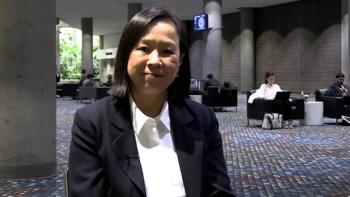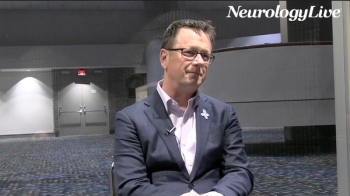
The Impact of Gepants, CGRP Inhibition on the Migraine Treatment Landscape

Stephen D. Silberstein, MD, discussed the powerful impact that the new class of CGRP inhibitors is beginning to have on migraine.
Stephen D. Silberstein, MD
In May 2018, the FDA approved a first-in-class medication, erenumab (Aimovig), for the treatment of migraine. The monoclonal antibody inhibits calcitonin gene-related peptide (CGRP), a long-sought target in the development of therapies.
Erenumab’s class is robust, as well. In addition to the Novartis/Amgen product, there are 3 other members: eptinezumab (ALD403, Alder Biopharmaceuticals), fremanezumab (Ajovy, Teva), and galcanezumab (Emgality, Eli Lilly)—the latter 2 of which have FDA decisions pending for September 2018.
In addition to monoclonal antibodies, small molecular inhibitors against CGRP, known as gepants, are also in development. Chief among these agents are ubrogepant and rimegepant, both of which have shown promise in phase III clinical trials.
Stephen D. Silberstein, MD, the director of the headache center at Jefferson University Hospitals, sat with NeurologyLive’s sister publication, MD Mag, to discuss the effect of these therapies on the landscape of migraine treatment, and what may still be to come.
Regarding ACHIEVE-1, what was the most outstanding result of the trial?
Stephen D. Silberstein, MD: I think the easiest way to look at it is that we have a new class of medications for the acute treatment of migraine, for somebody to take when they get a migraine attack. This is a new class of drugs called “gepants.” What are the advantages? Well the drugs we all use are triptans, and as you well know, people who have cardiovascular disease, stroke, significant hypertension—they can’t use them, and they have side effects. The major advantage to this class of drugs called gepants is the fact that they do not have cardiovascular risk, so the side effects are like a those of a sugar pill. That’s the background.
The new study is designed to look at the effects of the medication during a migraine attack, and what it showed was—to me, the most amazing part—1., the side effects are no different than a sugar pill, and 2., the pain relief and pain-freedom in 2 hours, which was significantly separated from placebo. Showing not only the drug was safe and had no side effects, but it was effective.
Maybe it’s just coincidental—but what’re your thoughts on the timing of all these developments that have resulted in a rush of migraine therapies to the market?
SS: For the first time in a long time we’ve gone from no news to lots of good news. We’ve gone to these new medicines for the acute treatment of migraine, and we have new medicines for the prevention of migraine.
This is all based on the concept that there’s too much CGRP—calcitonin gene-related peptide—floating around, and we can neutralize it with small molecules like gepants and other drugs that sort of suck it up. So, basically speaking, unlike other drugs where there is rebound headache by taking too much, by taking a drug with a known method of action that works for prevention, this drug will have the paradoxical effect of the more you take, the fewer headaches you get. So, not only is it safe and effective, it’s anti-rebound headache. So, if you take too many triptans you end up with too many headaches. You take too much of this and your headaches may not happen for a while.
We’re starting to see more and more results pertaining to year-long efficacy and beyond, are there any expectations for the limits that are reachable with this class of drug?
SS: Antibodies are nothing more than a long-acting form of the gepants, and we know from studies, that up to a year they continue to work—and they work better. So, based on that evidence I would strongly suspect that when we see the long-term results of acute treatment it will continue to work just as well in a year from now, as it does now.
Anything thoughts about the safety and tolerability of them?
SS: I think it’s important to realize that these drugs have no appreciable side effects. In the past, other drugs in the class caused some liver function abnormalities, and people used to say CGRP blockage is dangerous, but the fact that we have 4 monoclonal antibodies directed against a CGRP-receptor with no effect on the liver, means that it’s not the CGRP that does it. You know when you make a molecule you build a building block, and I think the issue was the building block they used for older drugs may have been metabolized as something in the liver, but I think this new generation of drugs—to the best of our knowledge—looks entirely clean.
From here, there’ll be this study, long-term follow up for long-term safety, then hopefully we’ll have it on the market for use.
Is there anything else you want to add on these developments in migraine?
SS: Well, as everyone knows, we’re in the midst of an opioid epidemic. Part of the reason we have an opioid epidemic is that people are treating the symptoms of migraine, not the cause of migraine. We actually did a survey, and we’ve found that if you have chronic migraine—that’s migraine more than 15 days of the month—50% of patients are prescribed narcotics or opioids. If you have episodic migraine—that’s less than 15 days a month—it’s one-third. If you start giving opioids to people with frequent headaches, then the result is they will overuse them, have rebound headaches, and their headaches will become intractable. By moving to new classes of drugs that both prevent migraine and treat migraine without producing it, I think we’re going to help kill the opioid epidemic.
Transcript edited for clarity.
Newsletter
Keep your finger on the pulse of neurology—subscribe to NeurologyLive for expert interviews, new data, and breakthrough treatment updates.


































